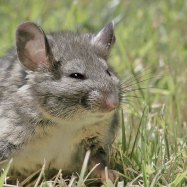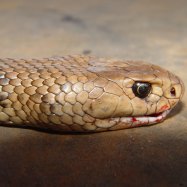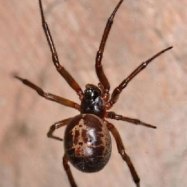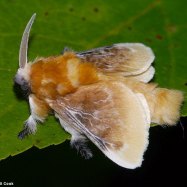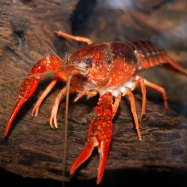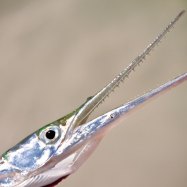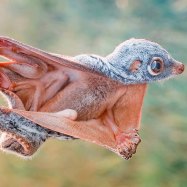
Praying Mantis
2 to 5 inches (5 to 13 centimeters)
The Praying Mantis, known for its unique praying posture, belongs to the Mantidae family and can grow up to 2 to 5 inches in length. Found in various habitats, these slender insects are recognizable by their long front legs used to catch prey. Keep an eye out for these fascinating creatures, also known as the Gardeners of the insect world. #PrayingMantis #Mantidae #Gardeners #Insects #NatureFacts
Animal Details Summary:
Common Name: Praying Mantis
Kingdom: Animalia
Habitat: Terrestrial
The Enigmatic Praying Mantis: Masters of Camouflage and Deadly Predators
When you think of predators, your mind may jump to images of lions, tigers, and sharks. But what if I told you that one of the most skilled and mysterious hunters can be found right in your own backyard? The praying mantis may seem like an unassuming insect, but don't be fooled by its peaceful appearance. With its unique abilities and adaptations, the praying mantis is a formidable predator that has captured the fascination of scientists and nature enthusiasts alike.Meet the Mantis
Scientifically known as Mantis religiosa, the praying mantis is a member of the order Mantodea, within the insect class Insecta Praying Mantis. Its common name is derived from its characteristic posture, where it appears to be in a state of prayer, with its front legs held together in a praying-like fashion. This unique stance is what makes the praying mantis instantly recognizable and adds to its enigmatic allure.Found in various habitats worldwide, the praying mantis belongs to the family Mantidae and is part of the vast animal kingdom, Animalia. Within this kingdom, it belongs to the phylum Arthropoda, meaning jointed foot, due to its segmented limbs. Despite their worldwide distribution, the exact country of origin of these fascinating creatures remains unknown.
Taking on the World
One of the most intriguing aspects of the praying mantis is its mastery of camouflage. With its slender body and long front legs, the mantis is well-adapted to blend seamlessly into its surroundings. Their primary colors are usually shadesof green, brown, or a mix of both, which allows them to blend seamlessly into plants, trees, or other foliage. Some species even have intricate patterns that resemble leaves, twigs, or flowers, making them practically invisible to their prey Polish Chicken.
This exceptional ability to blend in makes the praying mantis an ambush predator, waiting patiently for unsuspecting insects to cross its path. Once within striking distance, the mantis uses its agile front legs to quickly grab its prey, immobilizing it with a tight grip. The prey is then brought up to the praying mantis's mouthpart, called the "raptorial legs," where it is devoured alive.
Unlike other predators that use brute force to take down their prey, the praying mantis uses a more calculated approach. With their keen sense of sight, they can accurately strike at their prey, often targeting the weakest spots, such as the head or wings, for a quick kill. This cunning strategy, along with their swift movements and powerful front legs, makes them deadly hunters.
A Carnivore's Diet
As mentioned earlier, the praying mantis is an insect and belongs to the class Insecta. However, unlike other insects that feed on plants, the mantis is a carnivore. This means that its diet primarily consists of other insects, making them critical in maintaining the balance of insect populations.The most common prey for the praying mantis includes flies, mosquitoes, moths, crickets, and grasshoppers. However, they are not picky eaters and have also been known to take on larger prey, such as spiders, lizards, and even small birds. This makes them an essential part of the food chain, playing a significant role in controlling pest populations.
A World of Colors and Shapes
One cannot help but be mesmerized by the striking colors and intricate designs of the praying mantis. With over 2000 species around the world, each with its distinct features, there is no shortage of visual variety.The most common colors are shades of green and brown, as mentioned earlier. However, some species can also have bright colors, such as pink, purple, or even blue. These bright colors often serve as a warning to potential predators, indicating that the mantis may be toxic or have a bad taste.
In addition to their color, the praying mantis also has a unique body shape. As an insect, it has three main body parts: the head, thorax, and abdomen. However, the mantis's head is highly mobile, allowing it to rotate 180 degrees, giving it a 360-degree view of its surroundings. This capability, combined with its ability to remain perfectly still for extended periods, gives them an edge over their prey.
From Tiny to Mighty
Despite its small size, the praying mantis is a mighty predator. The average length of a mantis can range from 2 to 5 inches or 5 to 13 centimeters. However, some species, such as the Chinese praying mantis, can grow up to 6 inches or 15 centimeters in length, making it the largest species of praying mantis in the world.Male mantises are typically smaller than females, and a size difference can be observed even within the same species. This size difference is primarily due to the female mantis's role in reproduction, where she must carry and lay eggs, which can be a heavy burden for her small body.
Mantises and Humans
The praying mantis's enigmatic reputation, along with its unique abilities, has captured the fascination of humans for centuries. In some cultures, such as Chinese and Japanese, the praying mantis is considered a symbol of good luck and fortune. In contrast, others associate the mantis with the supernatural, believing it to possess mystical powers.In terms of their benefits to humans, the praying mantis has proven to be a useful pest control method in agriculture. By feeding on pest insects, they reduce the need for chemicals and pesticides, making them an environmentally friendly approach to pest control.
Natural Language Processing and the Praying Mantis
Natural Language Processing (NLP) is a type of artificial intelligence that focuses on analyzing and generating human language. It has become an essential tool in data analysis and is being used in various industries, from customer service to fraud detection.Despite their small size and simple appearance, the praying mantis has proven to be an incredibly intelligent species. From their highly-developed camouflage abilities to their strategic hunting methods, the praying mantis has evolved to survive in a constantly changing world. By studying these creatures, scientists hope to gain insights into their unique adaptive mechanisms and potentially apply them to future AI developments.
Conclusion
In conclusion, the praying mantis may seem like just another small insect, but its unique abilities make it a fascinating and formidable predator. With their mastery of camouflage and swift, strategic hunting techniques, they have earned their place among the most skilled hunters in the animal kingdom. As we continue to unravel the mysteries of the praying mantis, one thing is for sure – these enigmatic creatures are truly a marvel of nature.
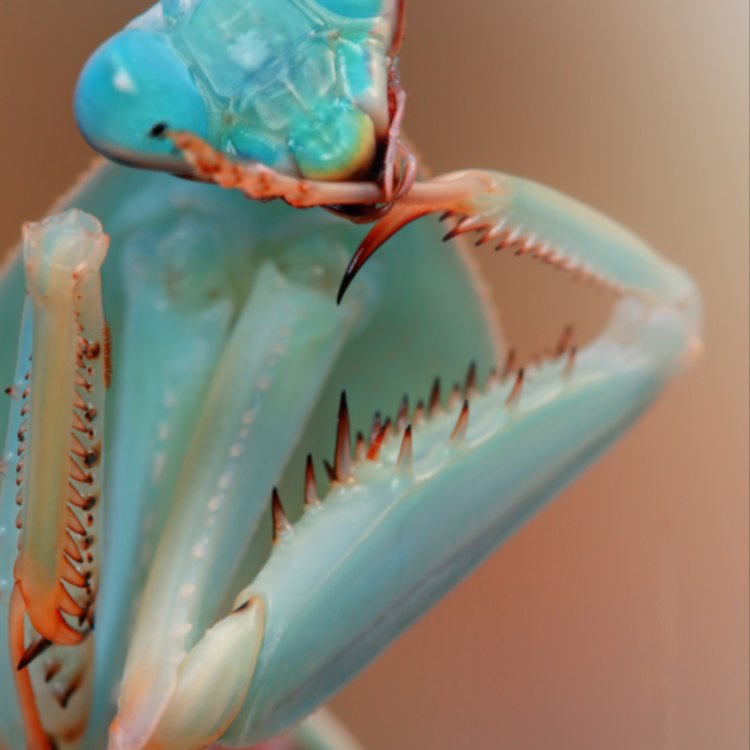
Praying Mantis
Animal Details Praying Mantis - Scientific Name: Mantis religiosa
- Category: Animals P
- Scientific Name: Mantis religiosa
- Common Name: Praying Mantis
- Kingdom: Animalia
- Phylum: Arthropoda
- Class: Insecta
- Order: Mantodea
- Family: Mantidae
- Habitat: Terrestrial
- Feeding Method: Carnivorous
- Geographical Distribution: Worldwide
- Country of Origin: Unknown
- Location: Various habitats
- Animal Coloration: Green, brown, or camouflage
- Body Shape: Slender body with long front legs
- Length: 2 to 5 inches (5 to 13 centimeters)
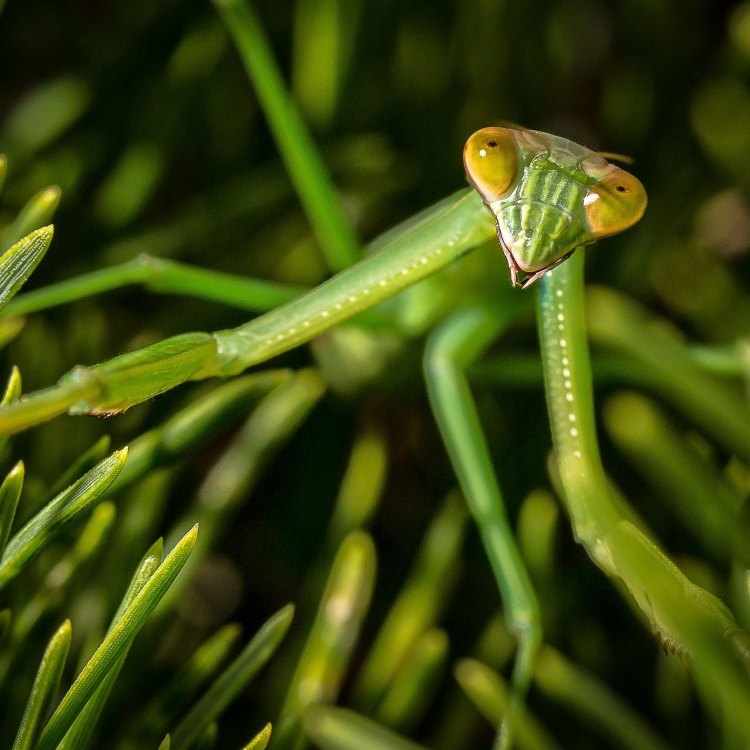
Praying Mantis
- Adult Size: Medium-sized
- Average Lifespan: 1 year
- Reproduction: Sexual
- Reproductive Behavior: Female cannibalizes male after mating
- Sound or Call: Males can make soft, high-pitched sounds
- Migration Pattern: Non-migratory
- Social Groups: Solitary
- Behavior: Predatory, patient, and motionless when hunting
- Threats: Predators, habitat loss, and pesticide use
- Conservation Status: Not Evaluated
- Impact on Ecosystem: Help control insect populations
- Human Use: Used for pest control in agriculture
- Distinctive Features: Long front legs and triangular head
- Interesting Facts: Praying mantises can turn their heads 180 degrees
- Predator: Birds, reptiles, spiders, and larger insects

Mantis religiosa
The Fascinating World of the Praying Mantis: Predators, Adaptations, and Unique Behaviors
The praying mantis is a fascinating insect, known for its patient hunting behavior and unique reproductive habits. These medium-sized insects are found in most parts of the world and have captured the interest of scientists, nature enthusiasts, and even gardeners for their distinctive features and interesting behaviors. In this article, we will delve into the world of praying mantises, exploring their physical characteristics, behaviors, and role in the ecosystem.Physical Characteristics
The adult praying mantis, also known as a mantid, has a medium-sized body that can range from 0 PeaceOfAnimals.Com.5 inches to over 6 inches in length, depending on the species. They have a triangular-shaped head with large, compound eyes and flexible necks that allow them to scan their surroundings for potential prey. The most distinctive feature of a praying mantis is its long front legs, which are used for catching and grasping insects.
Another unique physical trait of these insects is their ability to blend into their surroundings. Praying mantises come in a variety of colors, including shades of brown, green, and even pink, allowing them to camouflage themselves within the surrounding vegetation. This helps them to remain undetected by predators and sneak up on their prey more effectively.
Life Cycle and Reproduction
Most praying mantises only live for about a year, with their lifespan ranging from 6 months to a year. However, some species can live up to 2 years in captivity. Praying mantises reproduce sexually, with the female laying up to several hundred eggs in a frothy, protective casing called an ootheca Pachycephalosaurus. This casing is attached to a branch or stem and provides offspring with protection from predators and the elements until they hatch.
One of the most peculiar reproductive behaviors of praying mantises is their cannibalistic tendencies. After mating, the female mantis will often turn around and consume the male, sometimes even before or during copulation. This behavior may seem extreme, but it serves an evolutionary purpose – providing the female with much-needed nutrients to produce healthy eggs. It also prevents competition for food and resources between the male and offspring, ensuring the survival of the next generation.
Communication and Sound
While praying mantises are generally solitary creatures, they do communicate with each other through various sounds and movements. Males, in particular, are known for their soft, high-pitched calls, which they use to attract mates. These calls can range from a quiet buzz to a loud, piercing sound, depending on the species.
Interestingly, some species of praying mantises have been observed exhibiting mimicry behavior, where they imitate the sounds of other insects to attract prey. This is particularly common in species that are active during the day and prey on flies and other insects that are attracted to sound.
Behavior and Hunting Techniques
Praying mantises are known for their predatory behavior and unique hunting techniques. These insects are patient and motionless while stalking their prey, often blending into their surroundings, making them almost invisible to potential victims. Once their prey comes into range, they use their lightning-fast front legs to grab it in a swift motion, often decapitating the victim with their sharp mandibles.
Aside from their unique hunting techniques, praying mantises are also famous for their ability to turn their heads 180 degrees. This allows them to have a wider field of vision, making them formidable hunters. They are also skilled at camouflage and can remain motionless for hours, waiting for their prey to come near.
Threats and Conservation
Despite their fascinating adaptations and behaviors, praying mantises face several threats in the wild. The most significant threats come from natural predators, such as birds, reptiles, spiders, and larger insects. Habitat loss and the use of pesticides also pose a significant threat to their survival, as these insects rely on vegetation for food and shelter.
Currently, the conservation status of praying mantises is not evaluated, which means that more research needs to be done to understand their population dynamics and potential threats. However, it is essential to conserve these insects as they play a crucial role in the ecosystem.
Impact on the Ecosystem
Praying mantises play a vital role in the ecosystem, mainly as predators of other insects. They help control insect populations, which, if left unchecked, could cause significant damage to plant life and food crops. By preying on these insects, praying mantises help maintain a balanced ecosystem and contribute to the overall health of the environment.
Human Use and Cultural Significance
While praying mantises may not be traditionally used in human consumption or medicine, they do have a practical use in agriculture. These insects are often used as a natural form of pest control in gardens and farms, reducing the need for harmful pesticides. In some cultures, praying mantises are seen as symbols of good luck, and their unique physical characteristics have also inspired several art forms and jewelry pieces.
In Conclusion
The praying mantis is a fascinating and unique insect, known for its distinctive features, behaviors, and impact on the ecosystem. These patient and clever hunters have captured the interest of humans for centuries, inspiring myths and legends, and continue to fascinate scientists and nature enthusiasts alike. As with all living creatures, it is essential to understand and appreciate these insects and their role in maintaining a healthy and balanced ecosystem. So, the next time you come across a praying mantis, take a moment to observe its movements and appreciate its fascinating adaptations.
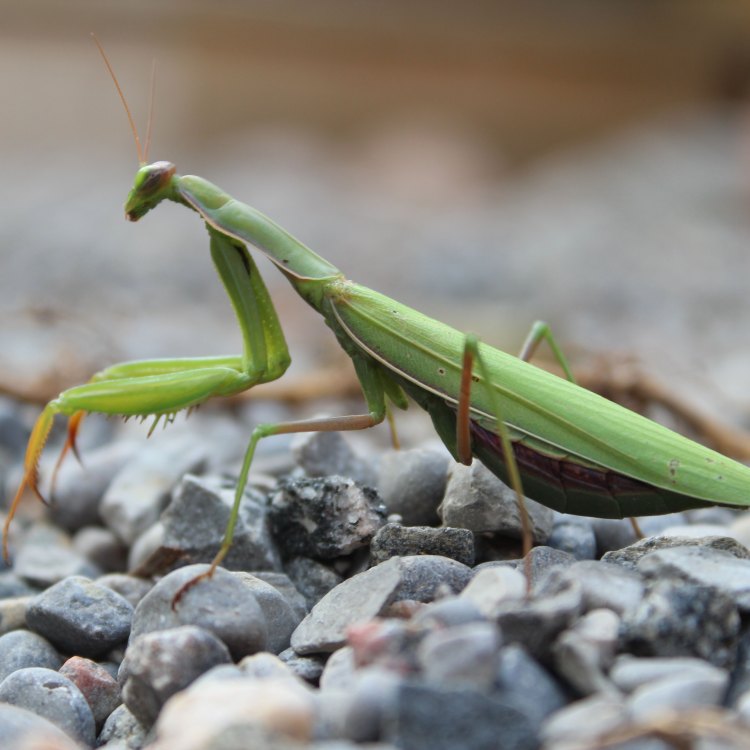
The Enigmatic Praying Mantis: Masters of Camouflage and Deadly Predators
Disclaimer: The content provided is for informational purposes only. We cannot guarantee the accuracy of the information on this page 100%. All information provided here may change without prior notice.

